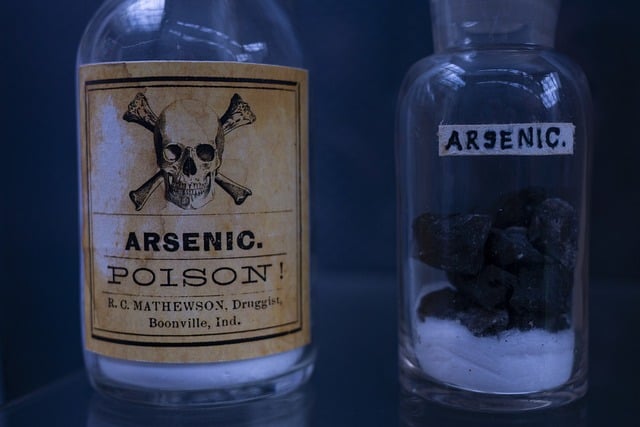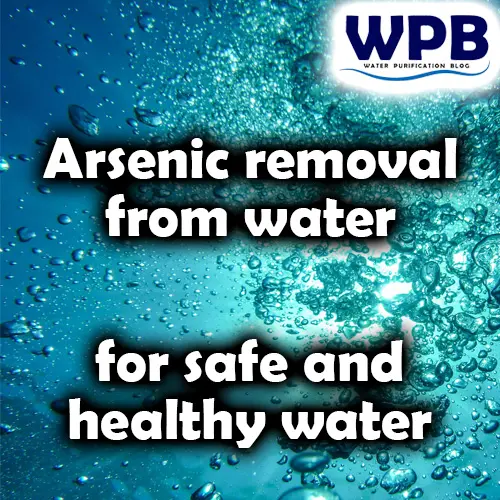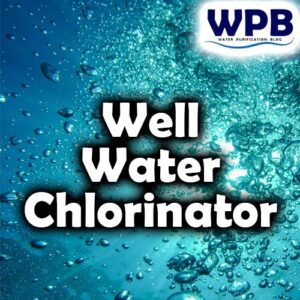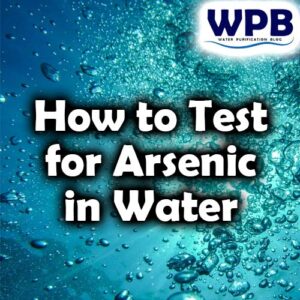Introduction
Arsenic is a naturally occurring element that can be found in rocks, soil, water, and air. While it can exist in both organic and inorganic forms, inorganic arsenic compounds found in water are highly toxic and a confirmed carcinogen according to the World Health Organization (WHO).
As long-term exposure to arsenic in drinking water can cause various health issues, including increased risk of cancers of the bladder, lungs, liver, and other organs, as well as diabetes, arsenic removal from water is essential.
Table of Contents
Unfortunately, arsenic contamination is a widespread problem globally, affecting millions of people. In the United States, the U.S. Geological Survey (USGS) has conducted extensive research to address arsenic in groundwater and drinking-water supplies around the country, and health officials are working to manage water resources to reduce exposure.
The purpose of this blog post is to explore the issue of arsenic contamination in water and provide readers with information on how to remove arsenic from their water sources. The importance of removing arsenic from water cannot be overstated as it is crucial to protect public health and prevent long-term health consequences associated with exposure to arsenic.
Types of Arsenic in Water
Arsenic is a toxic element that can contaminate water sources and pose serious health risks to humans. Arsenic can exist in two main forms in water: inorganic arsenic (III) and inorganic arsenic (V). Inorganic arsenic (III) and (V) differ in their chemical structure, toxicity levels, and health effects.

Inorganic arsenic (III) is more toxic than inorganic arsenic (V) and is associated with more severe health effects. Arsenic (III) can be more difficult to remove from water than arsenic (V) because it is more stable and does not easily oxidize to arsenic (V).
It is essential to know which type of arsenic is present in the water because different treatment methods are needed for each type. For example, activated alumina can effectively remove arsenic (V) from water, but it is less effective at removing arsenic (III). Knowing the type of arsenic present in water can also help to better understand the associated health risks and determine appropriate actions to reduce exposure.
Methods of Arsenic Removal
Arsenic removal from water is a crucial process, and various methods are employed to achieve it. Here are some details about the various methods of arsenic removal:
1. Alumina Filtration
Alumina is a material that can be used to filter out arsenic from water. Water passes through a bed of alumina, which adsorbs arsenic, and then the water is released as treated water. Alumina filtration is an effective method, but it requires regular cleaning of the bed to maintain its efficiency.
2. Reverse Osmosis (RO) Filtration
Reverse Osmosis (RO) is a popular technique that can remove arsenic from water. In this process, water is pushed through a semi-permeable membrane that removes arsenic as well as other contaminants. RO systems require regular maintenance and filter replacement, but they are effective at removing a wide variety of contaminants from water.
3. Chlorination
Chlorination is a water treatment process that involves adding chlorine to water to kill bacteria and viruses. Chlorination can convert Arsenic (III) to Arsenic (V), which can then be removed using other filtration methods.
4. Oxidation with Hydrogen Peroxide or Potassium Permanganate
Oxidation with hydrogen peroxide or potassium permanganate can convert Arsenic (III) to Arsenic (V), which can then be removed using other filtration methods.
5. Activated Alumina Adsorption
Activated alumina is a material that can be used to remove arsenic from water. In this process, water is passed through a bed of activated alumina, which adsorbs arsenic. The efficiency of activated alumina adsorption can be maintained by regular cleaning of the bed.
The choice of arsenic removal method depends on the specific needs and constraints of each situation. Each method has its advantages and disadvantages in terms of cost, efficiency, and maintenance requirements. It’s important to choose a method that is appropriate for the specific water source and that meets the relevant regulatory standards.
6. Specialized filter media for arsenic removal
There are several types of specialized filter media that can effectively remove arsenic from water.
Iron oxide, which is commonly used in a process called adsorption. In this process, arsenic ions are attracted to the surface of the iron oxide filter media and stick to it, effectively removing them from the water.
Granular ferric hydroxide is another filter media that is commonly used for arsenic removal. Like iron oxide, this filter media works through adsorption. Granular ferric hydroxide is especially effective for removing both arsenic III and arsenic V ions from water.
A newer filter media that has gained popularity for arsenic removal is titanium dioxide. This filter media works by creating reactive oxygen species that oxidize the arsenic ions in the water, making them easier to remove.
Factors to Consider When Choosing an arsenic Removal Method
When selecting a method for removing arsenic from water, several factors should be considered. These factors are:
Level of Arsenic
The level of arsenic in the water is a crucial factor in choosing a method for its removal. Different methods have different capabilities for removing arsenic, and their effectiveness varies depending on the initial concentration of arsenic present in the water. For instance, technologies such as adsorption, reverse osmosis (RO), and ion exchange are effective in removing arsenic at high concentrations, while distillation and activated alumina are more effective at lower concentrations.
Type of Arsenic
Arsenic in water is typically present in two forms: arsenic (III) and arsenic (V). Arsenic (III) is more difficult to remove and must be oxidized to arsenic (V) before it can be removed. Therefore, the method chosen for arsenic removal should be capable of oxidizing arsenic (III) to arsenic (V) before removal.
Size and Flow Rate of the Water System
The size and flow rate of the water system is another critical factor to consider when selecting a method for arsenic removal. The chosen method must be capable of treating the entire water system and maintaining a consistent flow rate while removing arsenic.
Cost and Maintenance Requirements
The cost of the method and its maintenance requirements are also essential considerations. Different methods have different costs associated with installation and maintenance, and these should be taken into account when selecting a method for arsenic removal. For example, ion exchange requires periodic regeneration with salt and wastes a fair amount of water, while activated alumina adsorption requires frequent replacement.
In summary, the selection of a method for arsenic removal depends on several factors, including the level and type of arsenic in the water, the size and flow rate of the water system, and the cost and maintenance requirements of the chosen method. It is essential to consider these factors to ensure that the chosen method is effective and sustainable for removing arsenic from water.
Conclusion
It is essential to choose a reliable and effective method for removing arsenic from water to protect public health and prevent economic loss. Therefore, it is recommended that individuals take action to ensure their drinking water is safe and arsenic-free by using a reliable water filtration system that effectively removes arsenic.
This may involve considering the level and type of arsenic present, the size and flow rate of the water system, and the cost and maintenance requirements of the method.
Overall, it is crucial to prioritize the health and safety of individuals and communities by ensuring that their water is free of harmful contaminants such as arsenic.

Who am I?
I am working as a water treatment technical manager and I have more than 25 years of practical experience in water purification.
Water purification expert
After many years of experience in water purification, I want to share some of my knowledge and get people to know the real importance of water quality.
Water purification and water treatment are very complex themes, so it is important to explain them in an easy-to-read way.
On this blog, you will find many understandable, easy-to-read information about water purification.
I hope you enjoy it, find some useful information, and thank You for reading.
More info on my work and my expertise on water purification can be found on my LinkedIn profile.






